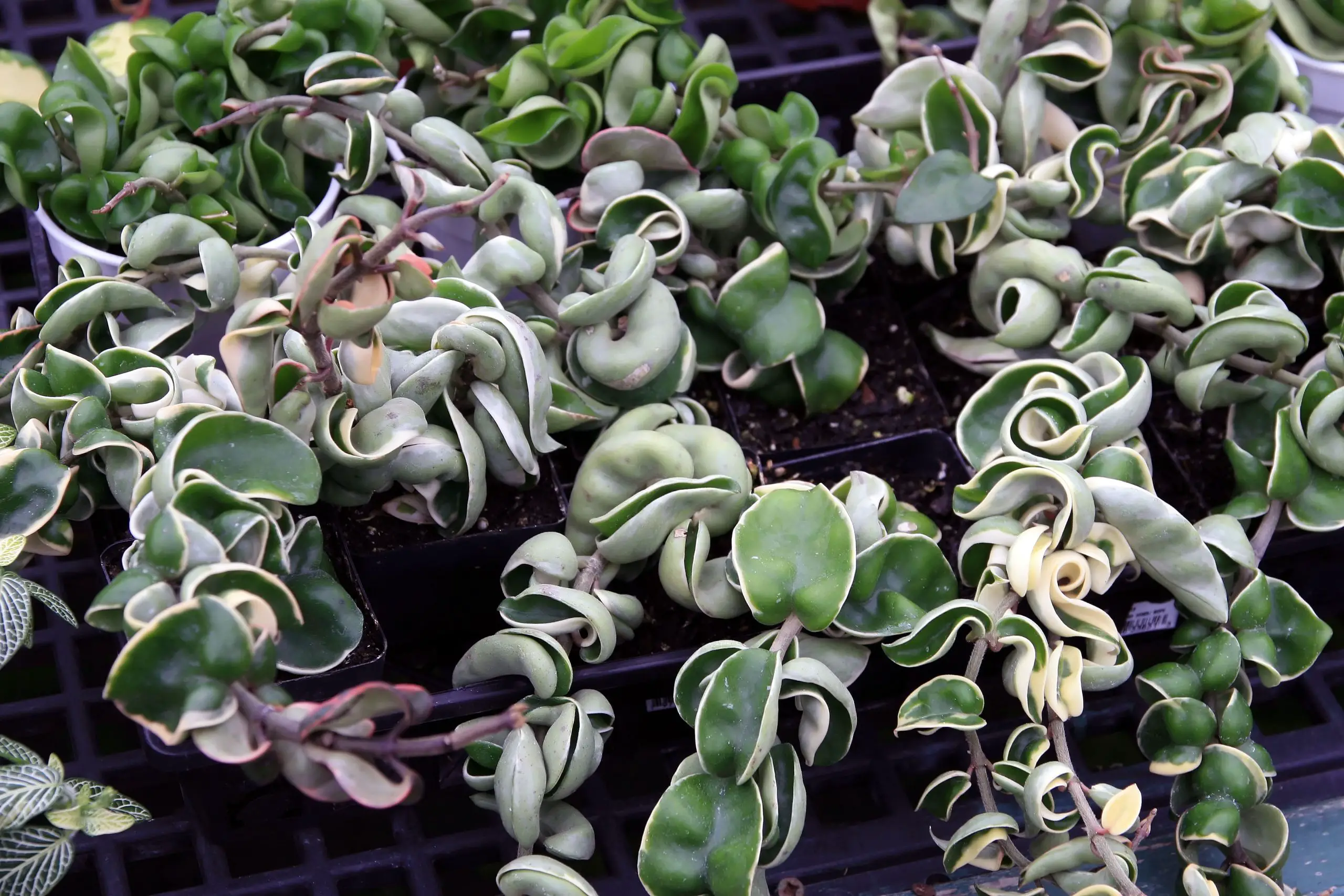The Hindu Rope plant, also known as Hoya compacta, is a captivating houseplant with thick, twisted leaves that resemble ropes. Its waxy leaves give it a unique texture, and when it blooms, the star-shaped flowers add to its exotic appeal. This intriguing appearance has made the Hindu Rope a favorite among plant enthusiasts and collectors.
A member of the Hoya family, the Hindu Rope is native to Eastern Asia and Australia. It’s a slow-growing plant, making it a suitable choice for small spaces or hanging baskets. Being a succulent vine, it requires minimal care and can thrive even if somewhat neglected.
Despite its tropical origin, the Hindu Rope is adaptable to various indoor conditions. Its distinctive appearance and manageable care routine make it an excellent choice for both novice and experienced gardeners. With proper care and attention, this beautiful plant can flourish and become a striking addition to any indoor garden.
| Attribute | Details |
|---|---|
| Common Names | Hindu Rope, Krinkle Kurl, Wax Plant |
| Botanical Name | Hoya carnosa ‘Compacta |
| Family | Apocynaceae |
| Plant Type | Succulent Vine |
| Mature Size | 2-4 feet long |
| Sun Exposure | Indirect, bright light |
| Soil Type | Well-drained, cactus or succulent mix |
| Hardiness Zones | 10-11 |
| Native Area | Eastern Asia, Australia |
Hindu Rope Care
Caring for a Hindu Rope is generally straightforward, but it does require some attention to specific needs. As a succulent, it’s tolerant of varying conditions but thrives best in bright, indirect sunlight and well-draining soil.
Avoid overwatering the Hindu Rope, as it can easily succumb to root rot. It is a plant that can withstand some neglect in terms of watering. Regular feeding during the growing season with a balanced fertilizer can promote growth and blooming, but avoid over-fertilization, as it can lead to leggy growth without enhancing flowering.
Light Requirement for Hindu Rope
Hindu Rope prefers bright, indirect sunlight. Direct exposure to strong sunlight can scorch the leaves. East or west-facing windows with filtered light or a spot near a south-facing window with some shade are ideal.
Soil Requirements for Hindu Rope
Well-draining soil is essential to prevent waterlogging. A commercial cactus or succulent soil mix is usually suitable. You can also create your own mix with regular potting soil, sand, and perlite.
Water Requirements for Hindu Rope
Watering should be done sparingly. Allow the top inch of soil to dry out between waterings. Reduce watering in the winter months when the plant is not actively growing.
Temperature and Humidity
The Hindu Rope prefers temperatures between 60°F and 80°F (15°C – 27°C). It can tolerate some variations but avoid sudden temperature changes. Humidity is generally not a significant concern, but misting the plant occasionally can be beneficial.
Fertilizer
A balanced, water-soluble fertilizer applied every 4-6 weeks during the growing season is adequate. Avoid over-fertilizing as it can cause the plant to grow without flowering.
Pruning Hindu Rope
Pruning is generally not required, but you can trim to shape the plant or remove any dead or damaged growth.
Propagating Hindu Rope
Propagating Hindu Rope can be done through stem cuttings. Take a cutting with at least 2-3 leaves, allow it to air dry for a few hours, and then plant in a well-draining soil mix.
How To Grow Hindu Rope From Seed
Growing Hindu Rope from seed is rarely practiced, as it’s much easier to propagate through cuttings. If attempting, use fresh seeds and provide a warm, well-lit environment for germination.
Common Pests & Plant Diseases
Mealybugs
Mealybugs can be treated with insecticidal soap or alcohol on a cotton swab.
Scale
Scale insects can be scraped off or treated with horticultural oil.
Root Rot
Caused by overwatering, it can be prevented by proper watering practices and well-draining soil.
Common Problems With Hindu Rope
Yellow Leaves
Yellow leaves may be a sign of overwatering. Reduce watering and ensure proper soil drainage.
Lack of Blooming
Insufficient light or too much fertilizer may prevent blooming. Adjust light conditions and reduce fertilization if necessary.
Leggy Growth
Leggy growth might occur if the plant is not receiving enough light. Move it to a brighter location.
Pro Tips
- Avoid overwatering; allow the soil to dry slightly between waterings.
- Provide bright, indirect light to encourage growth and blooming.
- Use a well-draining soil mix to prevent root rot.
- Be patient, as Hindu Rope is a slow-growing plant that takes time to flourish.




